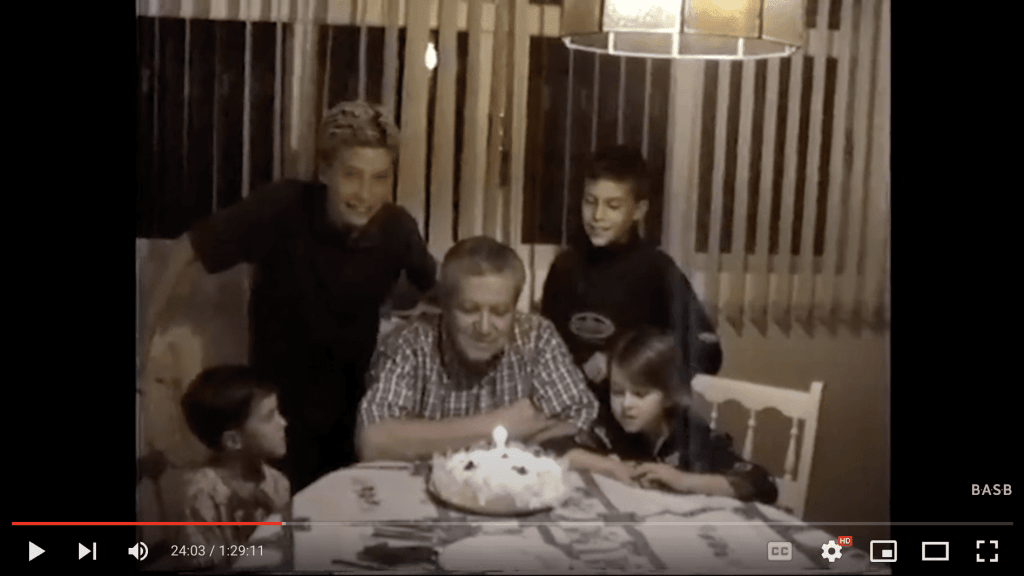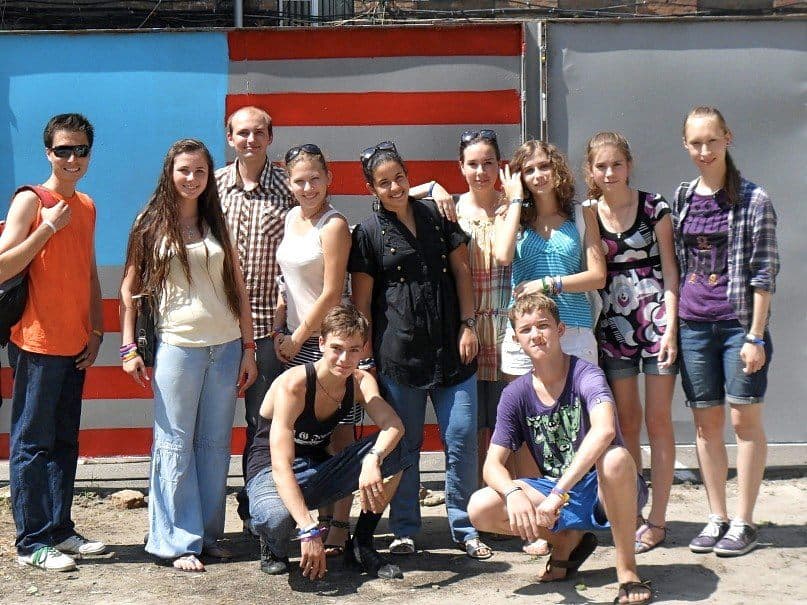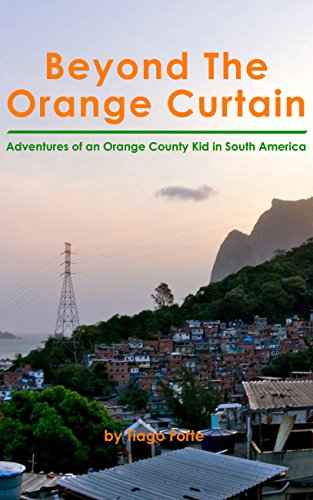It doesn’t have to be a huge project. It doesn’t have to be well-funded or prestigious or public. But it does have to draw something out of you so unexpected that it changes your conception of who you are.
The kind of creative project I’m talking about creates an unmistakable inflection point in your life. It changes your identity so much that you can never see yourself the same way again.
I recently read through years of my old journals for the first time ever, and five creative projects stood out as early inflection points in my life. Each one taught me an essential principle for how to purposefully choose life-changing projects. Each of these projects:
- Were about service
- Were self-initiated
- Were shared with others
- Produced a tangible artifact
- Asked for something in return
Together they make up a kind of “creative autobiography” that made me who I am today. Let’s take a closer look at each one to see how you can apply it for yourself.
Creative projects are about service
The foundation of my attitude toward creativity is that it is fundamentally a form of service to others.
I vividly remember traveling to Mexico for the first time at 10 years old on a volunteer trip with a group from our church. Before dawn on a Saturday morning, I climbed into my father’s red F-150 pickup truck, and together we drove two hours south to the border with a bed full of tools and supplies.

We made our way to an impoverished community of ramshackle houses, built out of pieces of scrap and plywood, on the outskirts of Tijuana. We had brought lumber to erect a series of simple wood-frame houses for families who lacked adequate shelter.
At 10 years old I couldn’t help much with the construction, so my responsibility was to ferry around hammers and nails, water and snacks. I worked tirelessly, stretching my inventiveness to its limit in search of any small skill I could offer or any meager resource I could give. Something as simple as playing with a 4-year-old so his parents could make a meal for the work crews proved that I could make a difference.
This might not seem like a typical creative project, but it demanded profound imagination from me. Only a short car ride from the wealthy suburbs of Orange County where we lived, I had stepped into a starkly different reality. I found myself face to face with the hungry eyes of children living in a kind of squalor my mind could barely comprehend. Everything I thought I knew about fairness, justice, and privilege was thrown into doubt.
This early experience shaped my understanding of creativity as a gift that is meant to be given away. I came to believe that if I had a skill, a resource, or a piece of knowledge that could alleviate someone’s suffering, I had the responsibility to offer it to them.
From that point on, I could never tell myself that I wasn’t ready, didn’t know or have enough, or needed to satisfy my own needs before I could afford to contribute. I had made a difference for someone when I was only 10 years old! For the rest of my life I’ve carried that value of service with me – to give even when I don’t feel ready, even when I’m afraid, and even when I don’t know exactly what I have to offer.
I see so many artists, writers, and other creatives getting wrapped up in their own perfectionism and preciousness. They seem to believe if they can just understand and analyze their own psychology well enough, the obstacles to their self-expression will disappear. But the mind can throw up psychological barriers far faster than you can tear them down.
The only reliable way out of my creative blocks is not to endlessly dissect them – it is to transcend my own fears and insecurities by making myself useful to someone with greater needs than mine. By the time I return to my own problems, they always seem so minuscule in comparison.
Creative projects are self-initiated
The second key milestone in my creative autobiography was to commit to projects that were self-initiated: I chose to take them on of my own free will, and not because of any external obligation.
When I was 14 years old, my parents took me and my three siblings out of school and moved the family to Brazil for a year. It was important to them that we learn Portuguese and spend time with our Brazilian family, and they wanted to do it before we got too much older. After deciding they didn’t want to live in the vast metropolis of São Paulo, we moved instead to a small mountain town called Campos do Jordão.
It was there that I took out our Compaq laptop computer and decided, for the very first time, to write something because I wanted to. I had been forced to complete countless supposedly “creative” projects during years of schooling, of course, but this was different. I decided that I wanted to tell stories of our life in Brazil to the people who mattered to me back home, and I chose to write completely of my own volition.
I wrote about my new school and the friends I was making there. I wrote about my (mis)adventures exploring the surrounding neighborhoods and wilderness outside town. I wrote most of all about our frequent road trips across southern Brazil, our family of 6 packed into a tiny station wagon that only sat five, with my four year-old brother squeezed into the back between the suitcases.

To be clear, my writing at this point wasn’t any good. It wasn’t about quality – it was about agency.
There’s a tremendous difference between reacting to the pressure of an externally imposed demand that forces you to be creative, and the internally generated spark of an idea that you just have to express or you will burst.
When you only respond to external demands, you train yourself to look for sources of motivation exclusively in the external environment. You get used to waiting for someone to choose you, to approve of you, or to give you permission to take the next step. It’s useful to know how to respond to external demands, but it’s not enough to sustain a creative life.
In his book The Art of Learning (affiliate link), Josh Waitzkin says:
“In performance training, first we learn to flow with whatever comes. Then we learn to use whatever comes to our advantage. Finally, we learn to be completely self-sufficient and create our own earthquakes, so our mental process feeds itself explosive inspirations without the need for outside stimulus.”
What I’m talking about is the third stage – the ability to light that internal inferno and “create your own earthquakes” on demand. To experience yourself as a force of nature – a prime mover in the world that others will just have to make room for, or else.
Creative projects are shared with others
Some years later, after we’d returned to our home in California, I had my next epiphany: creative projects can be shared with others.
I think the main way our identities change is when we see that change reflected in the eyes of others. Our identities are socially constructed, which means we can’t change them as a strictly private affair. We change who we are by changing how others perceive who we are.
I remember clearly the first time I saw someone’s immediate reaction to something I’d created. I was 20 years old, and played a photo slideshow for my family of our past vacations, set to sentimental music using Apple iPhoto.
It was so simple it barely qualified as creativity – my tasks were limited to selecting the photos, deciding how long to display each one, and choosing the music – and yet even in those mundane decisions I had the chance to express my vision.

As the slideshow played, I looked over and saw a tear in my mom’s eye. What?! Something I had made in an hour had created a moving experience for someone I cared about? I could hardly believe it. I knew I would never get tired of creating such experiences.
It was a beautiful, sacred moment, seeing that something in me could reach out and touch someone else. In that moment my passion for creating immersive, meaningful experiences for others was born, and it’s been with me ever since.
Creative projects produce a tangible artifact
The fourth milestone in my creative journey was when I discovered that my projects were more powerful if they produced some kind of tangible artifact.
When I moved to Brazil again at the age of 23 to spend a year studying abroad, I decided to share my writing a little more publicly. The only kind of blog I had ever seen were travel blogs, and my exotic experiences about living in Brazil were the only stories I had worth telling. So I decided to start my first blog, Tiago in Brazil (the name, alas, was not very creative).

Fiddling with my blog template late one night, I installed a widget on my site that displayed a world map with a red pin showing the location of each visitor. I shut my computer, went to bed, and the next day woke up and idly opened my website.
To my shock and amazement, there were red pins all over the map! Probably only a dozen or so in retrospect, but amazing nonetheless. I had made no attempt to publicize or promote my blog, but somehow random visitors from around the world had found it anyway.
This highlights the special property of tangible artifacts, whether pieces of writing, a website, a book, a product, or a course – they have an existence independent of you, like a child, which means they can travel far beyond you.
Even when you sleep, or turn your attention to other things, or lose motivation or courage, the offspring of your mind will live on. And by continuing to live, they can grow and evolve and travel and spread, seeping out into the world in ways you can’t fully predict or control.
Someday one might even come back to you, totally transformed, like a long lost prodigal son returning home. Only when you lose control over your creation can it find its own destiny.
Creative projects ask for something in return
The fifth and final principle I adopted was to always ask for something in return.
It’s tempting to think of creativity solely as a gift that you give others. And there is definitely an element of generosity and altruism in it. But I think if it’s always a one-way gift you’ll eventually burn out. You can’t draw from the well for very long without refilling it.
When I share a tangible artifact I’ve created, I always try to ask for something in return. At minimum, the time needed to even pay attention to what I’m showing them. It could also include their opinion or feedback, an action I’d like them to take, a return favor or help on a project, or a monetary payment.
Creativity is an exchange – the fruits of my imagination for the fruits of theirs. I ask for something in return not just because it serves my needs, but because it is an invitation for them to express their own ingenuity or appreciation in return. It is an investment, according to my life philosophy of Servant Hedonism.
From 2009 to 2011, I lived in Eastern Ukraine while serving as a US Peace Corps volunteer. I taught English at a local school as my day job, and in my free time worked on a variety of projects ranging from youth leadership summer camps to HIV/AIDS awareness to community service projects.

The problem was that I had no funding, so I decided to package together all the posts from my Brazilian travel blog into an ebook and sell it as a fundraiser. To my amazement, I raised almost $3,000, mostly from friends and family. For a meager $15, they received a collection of entertaining stories and the chance to support my work in the Peace Corps.
That money funded a summer camp program I created called PBC, which stands for Projects Bring Change. Each summer I would recruit a small group of promising high schoolers and take them through an intensive process of planning, budgeting, and executing a community service project in their community, all within a single week.

I quickly realized these teenagers had never had any exposure to the most basic skills of self-management: how to keep a calendar, manage a meeting agenda, write a budget, or make a plan with concrete steps. I also saw how impactful it was for them to learn those skills. Even years later, many of those same students talk about the impact that one week of intense learning had on their lives.
Not only was PBC one of the most meaningful experiences of my life, it was the first seed of experience teaching people the skills of productivity. Several years later it would lead directly to the business I have today.

I remember how terrified I was to hit “publish” on that first ebook. My heart in my throat, my skin cold and clammy, my breathing irregular – asking for something in return for my creation felt like an existential risk. I felt sure I would be ridiculed and shamed for my audacity, even though the funds would be used for a worthy purpose.
It was seeing appreciation in people’s eyes – the exact opposite of the judgment I had expected – that changed me forever. The creative work I put out into the world was like a key unlocking the tremendous amount of goodwill and love available all around me, including from strangers who I never spoke to.
Before I left Ukraine, PBC taught me a final, priceless lesson: the value of giving it away.
I created an operating manual and templates with everything I had learned running PBC during my service. I saved it to the shared drive accessible to all Peace Corps volunteers in Ukraine, along with a description of what the program was about.
Years after I left I heard through the grapevine that there were still volunteers using it in their communities. An idea I had birthed into existence far in the past continued to serve people well beyond the point I had moved on.
I think often creative people are afraid not of failure, but of success. What if it actually works out? What if all my ambitions are realized? They are afraid that if it succeeds, they will be responsible for keeping it going forever.
But PBC taught me that my role, even in things I invent, is limited. I don’t have to and cannot push everything I do to its ultimate conclusion. The ultimate act of responsibility toward your creation is to give it away.
Creativity as an exchange
Each of the projects I’ve described – sending that first letter, playing that first slideshow, hitting “publish” on the first blog post, or promoting that first book – felt like leaping across a chasm without knowing if there was anything on the other side.
None of it was planned or strategized, yet looking back, it feels uncanny and serendipitous how each one prepared the ground and planted the seeds for the ones that came later:
- A volunteering habit learned as a child years later prepared me to serve in the Peace Corps
- Writing letters to my family eventually led to blogging, which today has become a bestselling published book
- Making photo slideshows of family vacations gave me a sense of visual aesthetics that allowed me to create beautiful slides as part of the online course that I teach
- A leadership program I created for a youth summer camp set the stage for a business teaching professionals around the world how to take agency in their own lives and careers
Who would I be, and where would life have taken me, without these experiences?
What has sustained me all these years is that I always receive so much more in return than I can ever give. The stories of the impact my work has had, the look of gratitude and appreciation in people’s eyes, their own self-expression created in response, and the profits to keep it all going – these are my fuel.
Creativity for me is about awakening your agency. It’s about connecting to the source of your will, your power, and your truth to create a future that would not have happened anyway. It’s about daring to cross the boundary between the private and public worlds, artifact in hand and heart bared, to carry the flame of a message to someone who lacks fire.
Over the years, I’ve compiled a list of examples of creative projects that follow the five principles above, which are most likely to lead to the kinds of identity shifts I’ve described.
Enter your email below to see my list of creative projects as inspiration for your own.
- Posted in Creativity, Entrepreneurship, Personal growth, Self-tracking
- On
- BY Tiago Forte
